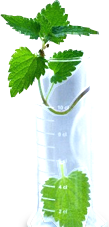



Author(s): Ajay D. Kshirsagar*, Omkar N. Shikare, Haidarali M. Shaikh
In the last decade, the regulatory bioequivalence (BE) requirements of drug products have undergone major changes. Now a day the bioavailability and bioequivalence study is emerging area in the generic world. Today, the discovery of drug substances with increasing lipophilicity and resultant poor aqueous solubility is a more and more common problem in the development of orally administered new formulations. The Biopharmaceutics Classification System (BCS) is the technique used to differentiate the drugs on the basis of their solubility and permeability is a guide for predicting the intestinal drug absorption. The knowledge of the BCS characteristics of a drug in a formulation can also be utilized by the formulation scientist to develop a more optimized dosage form based on fundamental mechanistic, rather than empirical, information. The possible changes in the class three and four drugs we increase the solubility and permeability and achieve great success in the field of generic market. Here in this review we compile the information on all four class drugs of BCS and their possible modification.